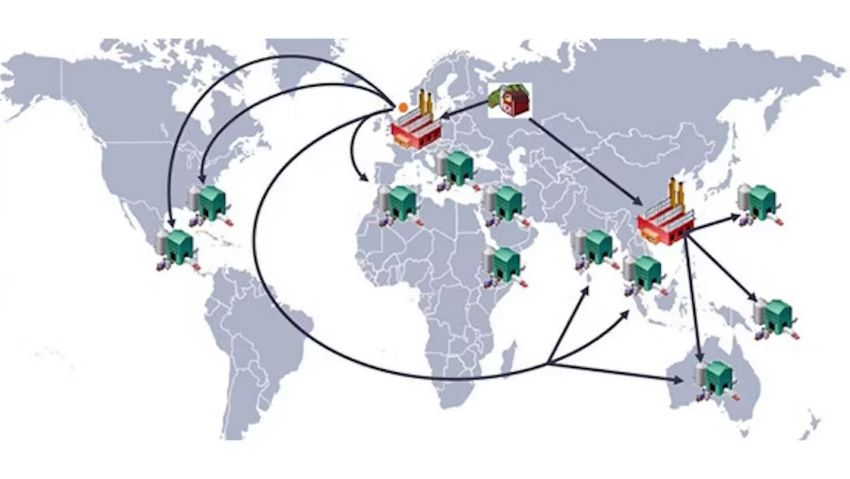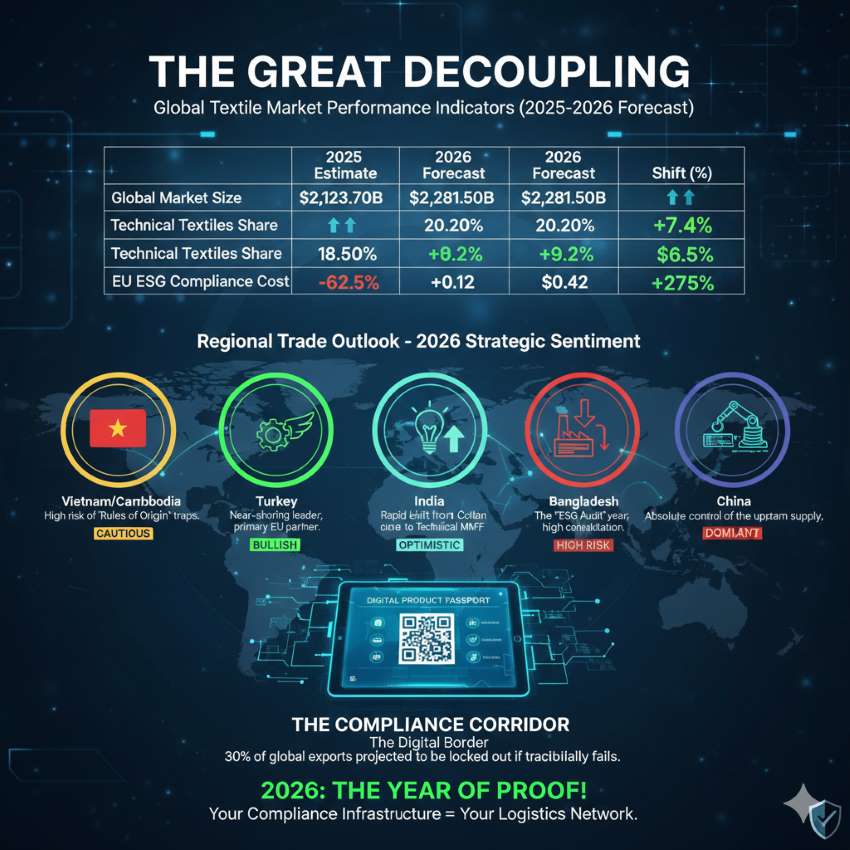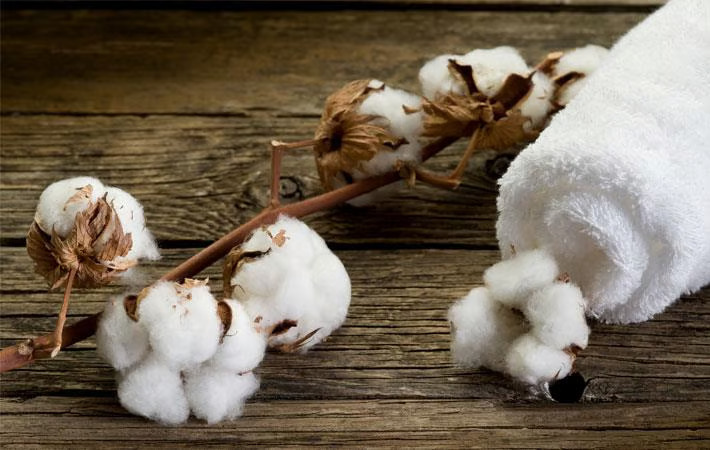
The announcement of reciprocal tariffs by the US, even with the 90-day pause on those excluding China, has triggered a significant restructuring of global textile supply chains. This sector, characterized by its intricate and geographically dispersed production networks, is highly sensitive to trade policy shifts. Important players like China, India, Turkey, and Indonesia are adapting their strategies to navigate this evolving landscape.
China repositions exports
While facing challenges in exporting finished textiles to the US, China is repositioning its raw material exports. It’s increasing exports to Southeast Asia. Countries like Vietnam, Bangladesh, and Cambodia are rapidly increasing their garment manufacturing industries. And they rely heavily on imported raw materials, particularly yarns and fabrics, from China. In fact, Vietnam's textile and apparel exports to the US have been steadily increasing. A significant portion of the raw materials used in this production comes from China. Data indicates a substantial rise in Chinese textile raw material exports to Vietnam in recent years, a trend likely to accelerate. Therefore, China is increasing its raw material exports to these countries to support their growing manufacturing sectors. This allows China to maintain its position in the supply chain, albeit at an earlier stage. Also, China will seek to increase raw material trade with African countries, where textile manufacturing is increasing, through heavy investment.
China is also actively looking to expand its raw material exports to other major markets such as the European Union and countries participating in the Regional Comprehensive Economic Partnership (RCEP). Mexico is also a key target, due to its proximity to the US
Table: Projected shift in China's raw material exports
|
Destination |
Current export share (estimated) |
Projected increase |
Reasons |
|
Southeast Asia (Vietnam, Bangladesh, Cambodia) |
35% |
15-20% |
Growing manufacturing, lower labor costs |
|
RCEP Countries |
20% |
10-15% |
Trade agreements, market diversification |
|
African Countries |
10% |
5-10% |
Increasing manufacturing capacity |
|
European Union |
15% |
5% |
Diversification of Markets. |
|
Mexico |
5% |
10-15% |
proximity to the US. |
India's export opportunities
India is expected to capitalize on the shifting landscape by increasing its raw material exports especially to the European Union and the Middle East. India has a strong base in cotton yarn and fabric production. It can increase exports to the EU, which seeks to diversify its sourcing away from China. The Middle East, particularly countries like the UAE and Saudi Arabia, are also growing markets for Indian textiles.
Table: Projected growth in India's raw material exports
|
Destination |
Current export share (estimated) |
Projected increase |
Reasons |
|
European Union |
20% |
10-15% |
Diversification of sourcing, competitive pricing |
|
Middle East |
15% |
8-12% |
Growing markets, proximity |
|
Mexico/South America |
10% |
5-10% |
Increased manufacturing for US supply. |
|
Southeast Asia |
20% |
3-5% |
Diversification of export markets. |
India can also increase trade with countries benefiting from US diversification. For example, countries such as Mexico, and certain South American nations that are increasing their textile production to supply the US, will increase their demand for Indian raw materials. Southeast Asian countries too are looking to diversify their raw material imports, away from solely relying on China. For example, as Bangladesh looks to diversify its raw material imports, India is a close and logical trade partner. India's proximity, and strong cotton production, gives it a competitive edge in supplying Bangladesh.
Turkey's and Indonesia's supply chain adjustments
Both Turkey and Indonesia will see an increase in demand for their products from countries looking to diversify their supply chains away from China. And both countries will need to invest in infrastructure and technology to meet the increasing demand.
Turkey's strength lies in its vertically integrated textile industry, from raw materials to finished goods. With tariff imposition, Turkey will focus on increasing its exports of higher value-added fabrics and yarns to the EU and the US. They will also seek to strengthen regional supply chains, sourcing raw materials from neighboring countries. Turkey will also see an increase in demand from European retailers that are looking to reduce reliance on the Far East.
Indonesia meanwhile will focus on attracting foreign investment to improve its manufacturing efficiency and increase its production of yarns and fabrics. They will seek to increase exports to countries in Southeast Asia and the Middle East. Indonesia will also attempt to increase its exports to countries that have free trade agreements with the US. And will focus on capturing the middle market of textiles, as companies move away from China, and look for low cost alternatives. Data shows, FDI in Indonesia's textile sector has been increasing, reflecting growing interest in its manufacturing potential.
Table: Supply chain shifts for Turkey and Indonesia
|
Country |
Focus area |
Export markets |
Supply chain adjustment |
|
Turkey |
Higher value-added fabrics, yarns |
EU, U.S., Regional markets |
Strengthening regional supply chains, increased investment in technology |
|
Indonesia |
Yarns, fabrics, attracting foreign investment |
Southeast Asia, Middle East, Countries with free trade agreements with the USA. |
Improving manufacturing efficiency, infrastructure development |
|
Turkey's textile export growth to EU (in $ bn) |
|||
|
Year |
Export value |
Growth rate |
|
|
2021 |
15.2 |
- |
|
|
2022 |
16.5 |
8.60% |
|
|
2023 |
17.8 |
7.90% |
|
|
Indonesia's textile sector FDI ($ mn) |
|||
|
Year |
FDI value |
Growth rate |
|
|
2021 |
450 |
- |
|
|
2022 |
500 |
11.10% |
|
|
2023 |
560 |
12% |
These tables highlight the quantitative perspective on the projected shifts. These shifts are highly dynamic and influenced by various factors, including evolving trade policies, economic conditions, and technological advancements.
Thus the 90-day hold on tariffs (excluding China) has led to but the long-term trend of supply chain diversification is likely to continue. The impact of the tariffs will vary depending on the specific textile product. Raw materials, yarns, and fabrics will be affected differently. Companies are now focusing on sustainability and ethical sourcing, which will further influence supply chain decisions.
The reciprocal tariffs are indeed triggering a significant restructuring of global textile supply chains, with countries adapting to the new trade landscape. While China's dominance may decline, countries like India, Turkey, and Indonesia are likely to gain. However, these countries need to address their respective challenges to fully capitalize on the shifting landscape.












